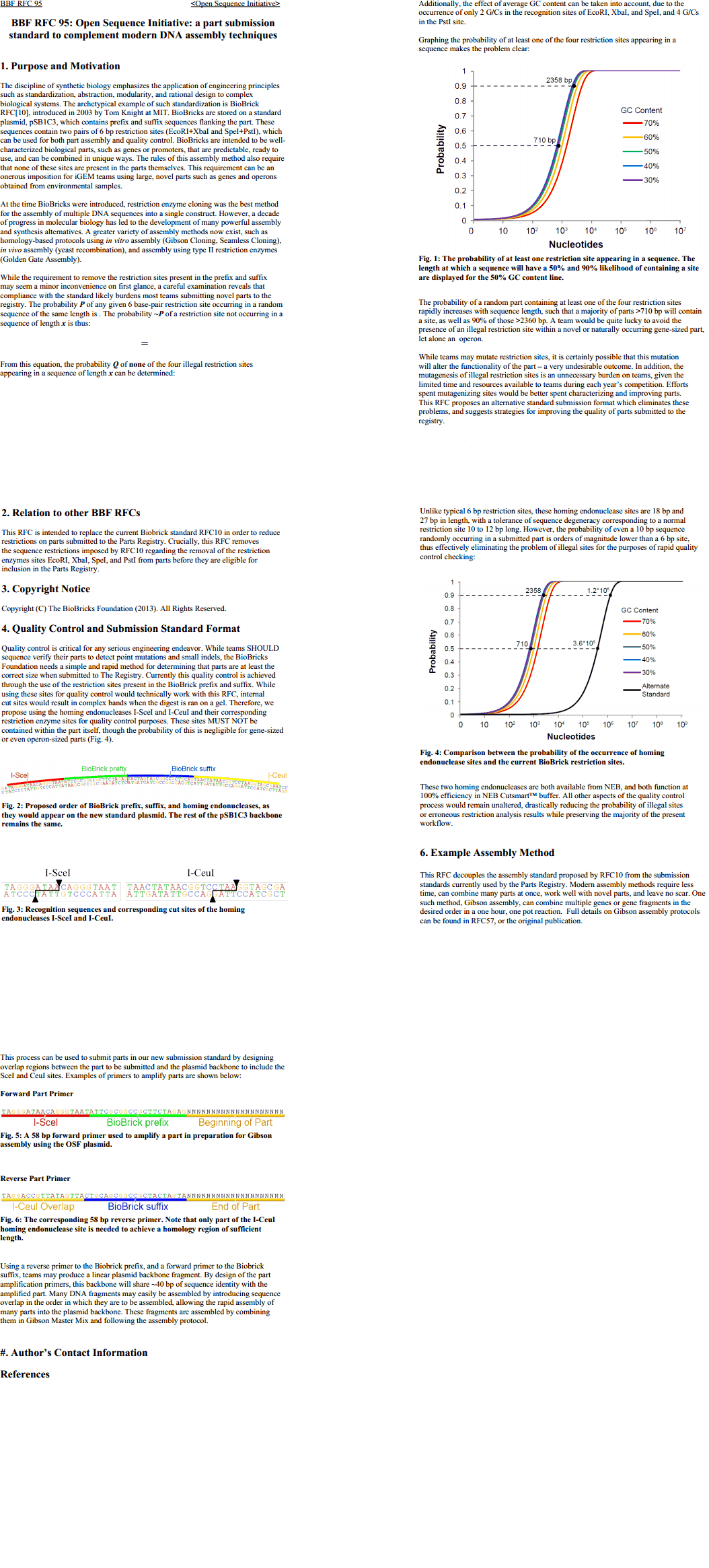Team:Greensboro-Austin/Standard Proposal
From 2013.igem.org
(→Introduction) |
(→Introduction) |
||
| Line 35: | Line 35: | ||
| - | Drawbacks... The issue here is that it requires everyone who wants to submit a part to the database is required to use the same assembly method. This would be totally fine if the standardized assembly method was without fault, but in the case of the Biobrick standard, this simply is not true. It is statistically shown that as the size of your construct approaches around 2400 base pairs, the chance of one of the four restriction sites popping up in your sequence is 90- 100% | + | Drawbacks... The issue here is that it requires everyone who wants to submit a part to the database is required to use the same assembly method. This would be totally fine if the standardized assembly method was without fault, but in the case of the Biobrick standard, this simply is not true. It is statistically shown that as the size of your construct approaches around 2400 base pairs, the chance of one of the four restriction sites popping up in your sequence is 90- 100% (as demonstrated by the graph on the second page of the RFC 95 below) |
Revision as of 22:14, 26 September 2013
Introduction
Previous Standards: As the fields of Synthetic Biology and genetic engineering emerged, arguments for the standardizing the assembly methods involved in constructing plasmids also emerged...
Why standards are awesome... What's great about standards, if followed, is that they allow everyone to be able to construct plasmids and oligos using the same methodology. Once these constructs are submitted into a database it is very easy for others to incorporate those parts into their own constructs because of the standardized submission and assembly methods; thus making collaboration much simpler.
Drawbacks... The issue here is that it requires everyone who wants to submit a part to the database is required to use the same assembly method. This would be totally fine if the standardized assembly method was without fault, but in the case of the Biobrick standard, this simply is not true. It is statistically shown that as the size of your construct approaches around 2400 base pairs, the chance of one of the four restriction sites popping up in your sequence is 90- 100% (as demonstrated by the graph on the second page of the RFC 95 below)
[updated probability chart with GC content-inserted here]
[because of this] We speculated that other teams might be having the same issues with regards to part submission and illegal restriction sites. To find out we made a survey asking other teams if they ever come across the same sorts of problems as we do- an analysis of their responses has been shown here:
RFC_95 9.2.13
Survey Results
 "
"

